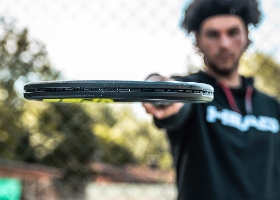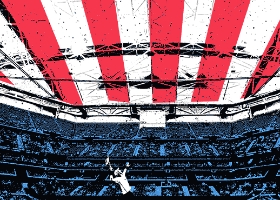GRASS? IT GROWS ON YOU (EVENTUALLY).
This unique playing surface brings its own challenges. Some players struggle, others excel. Why?
Firstly, there’s the surface variation, compared to clay or hard courts. Grass is a natural surface that tends to play faster on which balls bounce much lower. It can be tricky even for very good players, to adjust their timing and footwork, especially if they’re used to slower surfaces.
The next challenge is, grass offers a variable shaped surface to the ball, leading to uneven bounces. It takes quick adjustments and even quicker reflexes to effectively return shots.
Grass courts can be slippery. Players have to work extra hard at maintaining balance and changing direction in a split-second, increasing the risk of falls or injuries.
Many players train predominantly on clay or hard courts. This can make it more challenging to develop a playing style that is effective on grass.
Grass courts are great for a strong serve-and-volley technique. The fast nature of the surface allows for quicker movement towards the net after serving, giving a real edge to players who can finish points at the net. But for baseline players, adapting to grass can take a lot of practice and effort.
Some players might struggle on that tricky green surface, but others love it. Obviously, it depends on the player’s background and what their preferred surface is, but many adapt to grass over time, becoming more confident on this living surface. You could say, if you give it half a chance, grass can grow on you.

















